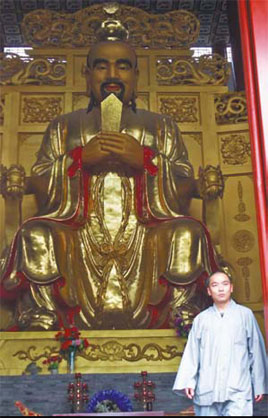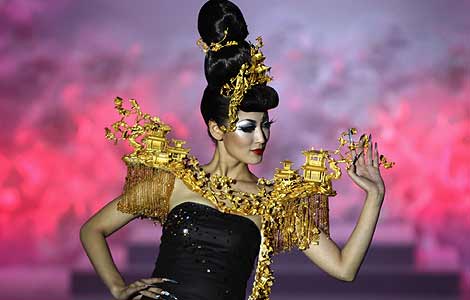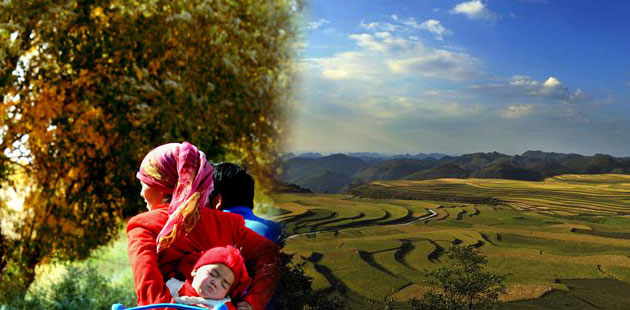Buddhism booms in Beilun
Updated: 2011-11-10 07:58
By Chen Liang (China Daily)
|
|||||||||
There's no sandy beach in the Beilun district of Ningbo, Zhejiang province, though it does have one of the country's largest seaports and a lot more to recommend it.
Its waterfront is defined by broad cement embankments and dominated by huge container cranes, looking out onto the East Sea. But Beilun town is quiet, clean and green, with gardens and parks sprinkled among the glittering modern buildings.
A surprising result of the city's prosperity is a boom in Buddhism, as dozens of temples have been, and are being, built around the satellite city of Ningbo. Of them, at least three are worthy of a closer look.
About 30 km southwest of the town and nestled on Lingfeng Hill, Lingfeng Temple is a new monastic compound, though its history can be traced back 1,500 years.
|
The statue of Taoist Ge Hong is the biggest draw of Lingfeng Temple, in Ningbo's Beilun district. Chen Liang / China Daily |
The temple's buildings are not grand - the Buddha statues are so-so. And an old trail connecting it to another temple is just 2 km long. What makes it remarkable, and one of the most popular temples in the area, is the Taoist statue of Ge Hong in the main hall.
The famous alchemist and traditional Chinese medicine doctor (AD 284 to 343 or 364) is believed to have lived a secluded life at the temple and could summon "die" (magic talismans) for good health.
Now, red, yellow and purple paper die are given to pilgrims by monks at the temple. They come, pray, give donations and take home die. Yellow represents former friends' or family members' peace in the afterlife. Red is for good fortune in the world of the living. And purple is for good health.
The pilgrims' donations are paying for a major expansion of the temple.
The recently completed Ruiyan Temple attracts visitors because of its beautiful, secluded setting.
In front of the temple is a reservoir, full of wild ducks stopping over on their southward migration, while rampant forests on Jiufeng (Nine Peak) Hills surround the temple's yellow walls.
A well-paved road winds from the temple entrance into the hills, from where visitors can climb to the hilltop and descend to another valley along a stone-paved path, through pines and bamboo, past pristine pools, sheer cliffs and roaring waterfalls.
It takes four to five hours to explore the trail from the temple, and there are plenty of places along the way to sit on benches and admire the scenery.
The temple offers 20 standard rooms, with air conditioning and Internet access, to its pilgrims and ordinary visitors.
The temple's abbot, Shanhei, says: "We don't charge for the rooms. You can donate whatever you want."
The most famous temple near Beilun is Ashoka Monastery. Founded in AD 425, it is one of the country's seven Buddhist temples containing a bone belonging to Shakyamuni (Gautama Buddha).
It is also the country's only temple named after the Indian King Ashoka, who elevated Buddhism to an official state religion in the third century BC. As a result, it has been considered one of the holiest temples since the Song Dynasty (960-1279).
The Buddha's Relic Hall perched on a two-story wooden building hidden in the depths of the monastery houses the bone.
Guarded by two monks 24 hours a day, seven days a week, you can see the relic by kneeling on a mat, bending your neck and looking up through the tiny window of an ornamental crystal pagoda, on a incense burner table.
The monastery's architecture matches its religious importance, with grand halls, old and majestic, Buddha statues shimmering with gold, and vivid wood and stone carvings.
When strolling around the monastery, it is easy to contemplate why there are so many temples in Beilun: It has both money and tradition.












